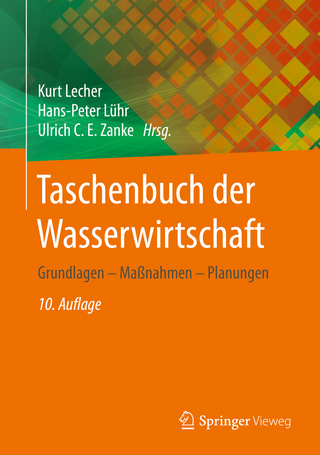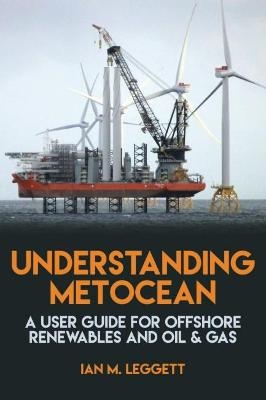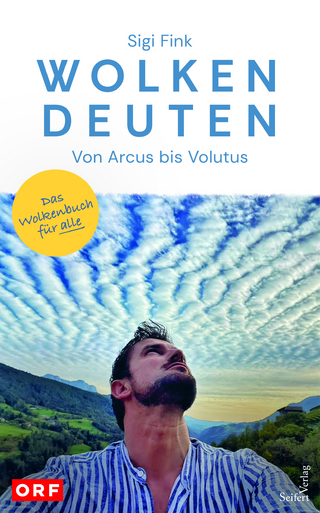
Climatology in Cold Regions
Wiley-Blackwell (Verlag)
978-1-119-70265-8 (ISBN)
Climatology in Cold Regions explores the complexities of land−atmospheric interaction across the Earth’s cryosphere, systematically placing soil thawing, snow melting, surface diabatic heating, and other processes within the context of broader climatological models. Drawing from a wealth of new data, leading atmospheric scientist Chenghai Wang illustrates how cold-region weather systems can be parameterized to improve seasonal climate prediction and provide crucial insights into projected changes in climate over the next 50-100 years.
The book opens with an introduction to the characteristics and classification of cold-region climatology, followed by a detailed description of the primary weather systems and land surface processes in cold regions. The core of the book presents a new approach for seasonal climate prediction using signals obtained from cryospheric processes, supported by a discussion of climate disasters and the impact of climate change on the ecology of cold regions.
Introduces a new way of modeling climate in cold regions
Offers novel approaches for assessing climate signals from cold regions in seasonal and sub-seasonal predictions
Presents new data on the role of cold-region climatology in forecasting and driving global temperature changes
Discusses the role of cold regions as the main source of global freshwater supply
A significant contribution to climate research and beyond, Climatology in Cold Regions is essential reading for students, scientists, and researchers in the atmospheric sciences, meteorology, ecology, hydrology, and Earth sciences.
Chenghai Wang is a Full Professor in the School of Atmospheric Sciences at Lanzhou University, China. With more than 30 years of experience in the field of cold-region climatology, Professor Wang has published 150 papers on climate dynamics and predictions, climate modeling, monsoons, and climate change in cold and arid regions. He serves on the editorial boards of Journal of Glaciology and Geocryology and Journal of Arid Meteorology and is a member of the National Technical Committee on Climate and Climate Change and the National Technical Committee on Wind and Solar Resources in the Standardization Administration of China.
List of Figures viii
List of Tables xi
Foreword xii
1 Introduction 1
1.1 Scope of the Subject and Recent Highlights 1
1.2 Some Definitions and Terms of Reference 1
1.3 Characteristics of Cold Region Climatology 3
1.4 Classification of Cold Region Climatology 4
1.5 Impacts of Cold Regions on Global Climate 5
1.6 Contribution of Cold Regions to Energy Balance 5
1.7 Summary 6
2 Climate in Cold Regions 7
2.1 General Circulation 7
2.2 Low and High Frequency of Atmosphere Variability 8
2.3 Weather Systems 9
2.3.1 The Polar Circulation 10
2.3.2 Polar Vortex 10
2.3.3 Polar Jet 16
2.3.4 Polar Low 17
2.3.5 Blocking High 19
2.3.6 Polar High 20
2.3.7 Stratospheric Sudden Warming 21
2.3.8 Weather Systems on the Tibetan Plateau 25
2.4 Radiation 28
2.4.1 Surface Radiation Budget 28
2.4.2 Aerosol–Cloud-Radiative Effect 36
2.5 Precipitation and Snow 45
2.6 Frozen Ground 47
2.7 Hydrology 48
2.8 Winter Monsoon 49
3 Land-Surface Process in Cold Regions 51
3.1 Land-Surface Characteristics in Cold Regions 51
3.1.1 Overview 51
3.1.2 Sea-Ice Cover 58
3.1.3 Land-Surface Evapotranspiration 60
3.2 Daily and Seasonal Cycle of Freeze–Thaw in Soil 60
3.3 Soil Freezing–Thawing and Snow-Melting Processes and their Hydrothermal Effects 64
3.4 Impacts of Soil Freeze–Thaw Process and Snow Melting on Surface Diabatic Heating 67
4 Land–Atmospheric Interaction in Cold Region 72
4.1 Spring Predictability Barrier 72
4.2 Signal of Climate Prediction in Land Processes in Cold Regions 73
4.3 Improvement of Climate Prediction by Assimilating Land-Surface Signals in Cold Regions 80
4.4 Soil-Moisture Memory in Cold Regions 83
4.5 Soil-Moisture Climate Coupling in Cold Regions 85
4.6 Snow–Climate Coupling in Cold Regions 90
5 Models and Modeling in Cold Regions 91
5.1 Snow and Freeze–Thaw Parameterizations 91
5.2 Hydrothermal Coupling Scheme in Land-Surface Model 98
5.3 Simulation of Land-Surface Process in Cold Regions 103
6 Hydrological Processes in Cold Regions 109
6.1 Glacier Hydrology 109
6.2 Snowmelt Runoff 110
6.3 Frozen Soil and Hydrology 115
6.4 River Ice and Lake-Ice Hydrology 120
6.5 Sea-Ice Hydrology 121
6.6 Sea Ice 122
6.7 Characteristics of Sea Ice Regimes in China 123
6.8 Precipitation Rates on the Tibetan Plateau 124
6.9 Precipitation Recycling on the Tibetan Plateau 133
7 Ecology and Vegetation in Cold Regions 136
7.1 Overview 136
7.2 Ecology and Vegetation Characteristics on the Tibetan Plateau 136
7.2.1 Spatial Distribution of Ecology and Vegetation 136
7.2.2 Vegetation Variations Respond to Climate Change 139
7.3 Ecology and Vegetation Characteristics in Middle and High Latitudes 142
7.3.1 Northern China 142
7.3.2 Europe 144
7.3.3 North America 145
7.4 Ecology and Vegetation Characteristics in the Arctic Region 146
8 The Carbon and Nitrogen Cycle in Cold Regions 149
8.1 Carbon, Nitrogen, and Greenhouse Gases on the Tibetan Plateau 149
8.2 Carbon, Nitrogen, and Greenhouse Gases at High Latitudes 156
8.3 Carbon, Nitrogen, and Greenhouse Gases in the Polar Regions 162
8.4 Outlook 167
9 Climate Disasters in Cold Regions 169
9.1 Overview 169
9.2 Snowmelt Flood 170
9.3 Freezing Rain 173
9.4 Winter Storms 178
9.5 Ice Avalanches 183
9.6 Ice-Jam Floods 187
9.7 Snow Avalanches 191
9.8 Freezing and Thawing Damage 192
9.9 What’s Next 194
10 Climate Changes in Cold Regions 195
10.1 Climate Change in Cold Regions in the Past Decades 195
10.2 Projection of Future Climate in Cold Regions 196
10.2.1 Impact of Soil Moisture on Frozen Ground and its Indicators 202
10.2.2 Changes in Permafrost Extent and Active Layer Thickness in the Twenty-First Century 204
10.2.3 The Soil Thermal and Hydraulic Regimes in Permafrost Regions 206
10.3 Changes of Related Environment Response to Climate Change in Cold Regions 209
10.3.1 Changes of Hydrological Processes 209
10.3.2 Changes of Ecology 211
10.3.3 Changes in Disasters 211
11 Challenges and Outlook 213
11.1 Challenges for Future Study 213
11.2 Conclusion 214
Appendix 216
Bibliography 219
Index 269
| Erscheinungsdatum | 12.01.2023 |
|---|---|
| Verlagsort | Hoboken |
| Sprache | englisch |
| Gewicht | 866 g |
| Themenwelt | Naturwissenschaften ► Geowissenschaften ► Meteorologie / Klimatologie |
| ISBN-10 | 1-119-70265-8 / 1119702658 |
| ISBN-13 | 978-1-119-70265-8 / 9781119702658 |
| Zustand | Neuware |
| Informationen gemäß Produktsicherheitsverordnung (GPSR) | |
| Haben Sie eine Frage zum Produkt? |
aus dem Bereich


